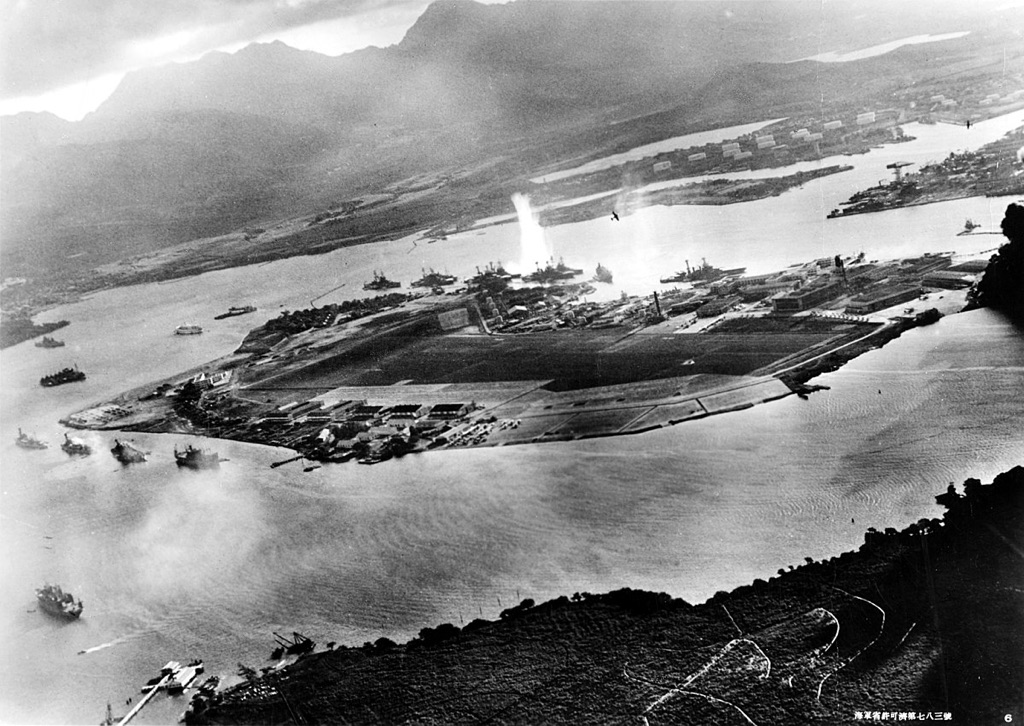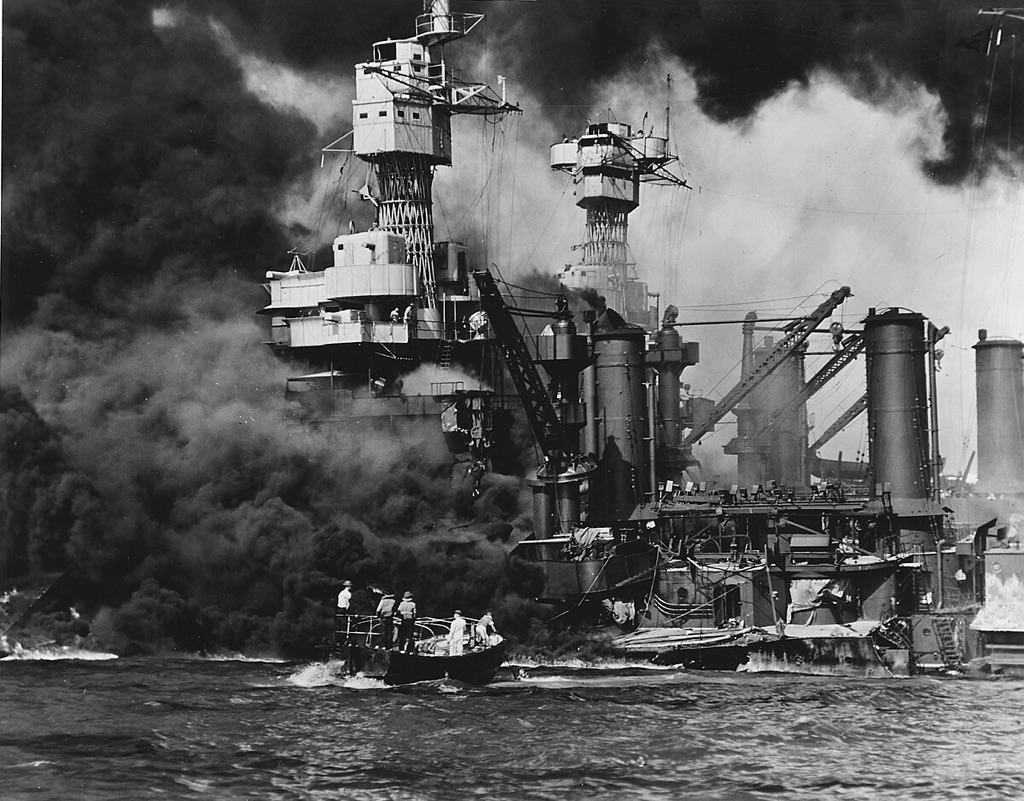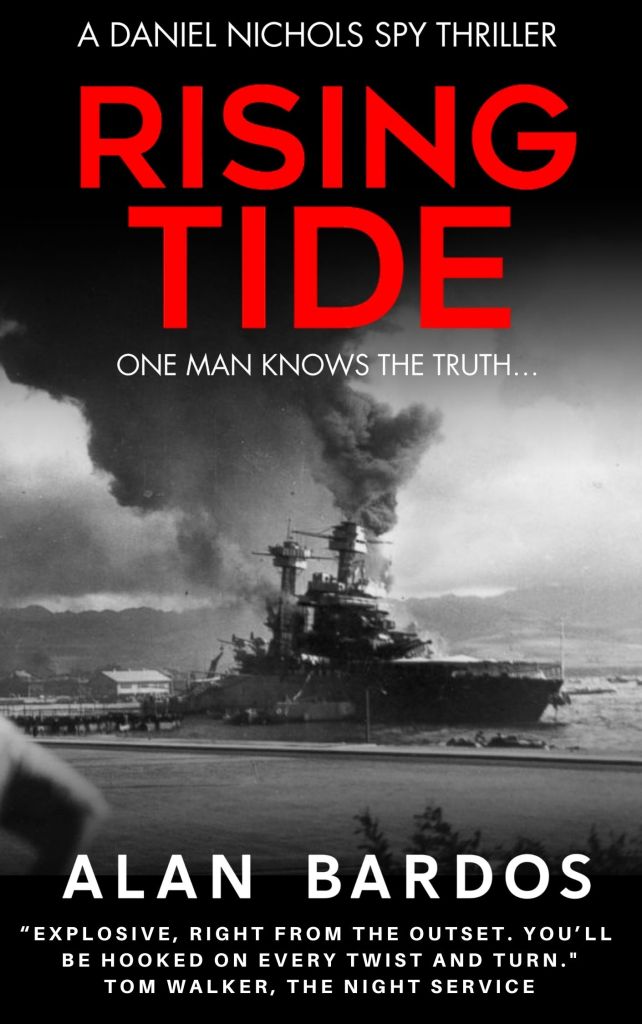Why did Japan attack Pearl Harbor?
Japan’s decision to attack Pearl Harbor has gone down in history as a short-term victory with catastrophic long-term consequences.
The Japanese leadership, already bogged down in an unwinnable war in China, were aware that they were hopelessly out matched by the industrial might of the United States. However, they believed there was no other option.
Japan had no natural resources, a growing population to feed and was encircled by Russia, Britain, France, the Netherlands and the United States; who were all furthering their interests in the Far East. Japan felt it needed to expand and increase its power base to avoid being swallowed by the Western powers and to develop as a great power in their own right.
This led to their invasion of China in the 1930s and the annexing of French Indochina in 1941. In response the United States imposed stiff economic sanctions that cut Japan’s supply of oil and raw materials. This left the Imperial Navy with only enough oil for a year. The Japanese government and military therefore saw a war with America as inevitable and an act of national self-defence that had been imposed upon them.

Takeo Yoshikawa in his memoir Japan’s Spy at Pearl Harbor stated that, ‘in the final analysis, the U.S. was the underlying cause of this war… The war finally broke out because you (Americans) did not understand Japan.’
The decision to go to war therefore originated from what was seen as two choices, to either face the humiliation of curtailing their imperial ambitions and exist as a client state of America, dependent on their iron-ore and oil. Either to become a third-class nation as Prime Minister Tōjō put it or to come out fighting.
Richard Overy argues in Blood and Ruins, The Great Imperial War 1931-1945, ‘The decision was taken with a fatalistic acceptance that fighting was preferable to humiliation and dishonour.’
Japan was already a highly militarised society and at a war footing, where as they viewed America as unprepared and unwilling to fight because of its culture of isolationism.

Nonetheless it was clear that war could not be waged on conventional lines. Japan would need to knock the United States out in one decisive engagement, destroying the morale of America and making it impossible for them to conduct war in the Pacific by forcing a stalemate. This, along with the growing pressure for America to fight the Germans on a second front in Europe, would be too much even for a power such as America and they would quickly make peace. That, at least was the strategic thinking behind the attack on Pearl Harbor and much of Japan’s long-term military thinking.
It was a terrible risk, but it presented a great opportunity. If Japan could destroy the American fleet at Pearl Harbor, the raw materials of Southeast Asia was there for the taking.
Such a complex operation would need careful planning and precise information about the disposition and defences of the US Fleet. That in itself risked exposing the whole plan. This is a major plotline of my novel Rising Tide, as seen through the eyes of Takeo Yoshikawa.

Here’s the blurb
November 1940.
Lieutenant Daniel Nichols, a former pacifist turned crusader, is wounded taking part in the Royal Navy’s carrier born air raid on the Italian Battle Fleet in Taranto.
Six months later Sándor Braun, a British double agent, escorts a Japanese delegation around Taranto and discovers that they are planning a similar attack. But what will the target be?
Nichols, now unable to fly, joins the Naval Intelligence Division, despite growing rumours that his nerve has gone. He debriefs Braun in London and sees the implications of his discovery. Britain cannot afford to suffer further setbacks in the far East.
Nichols convinces his superior officer, Ian Fleming, to allow him to travel to Lisbon in a bid to identify the target before it’s too late. The former airman uses the rumours about his lack of moral fibre as cover and poses as a deserter, with information to sell about the Taranto raid.
Braun helps Nichols to gain the confidence of German and Japanese Intelligence officers – and he is recruited to fly to Hawaii and spy on the US Navy.
Convinced that the Japanese plan to attack Pearl Harbour, Nichols travels to America to inform the FBI, but his warnings fall on deaf ears.
Nichols takes matters into his own hands and ventures to Hawaii, with the intention of preventing a catastrophe.
But will the Englishman’s intervention prove too little, too late?
https://www.amazon.co.uk/dp/B0CP4J1SZR
https://www.amazon.com/Rising-Tide-Daniel-Nichols-Thrillers-ebook/dp/B0CP4J1SZR/
Meet the author
Writing historical fiction combines the first great love of Alan Bardos’ life, making up stories, with the second, researching historical events and characters. He currently lives in Oxfordshire with his wife… the other great love of his life.
There is still a great deal of mystery and debate surrounding many of the events of the First World War, which he explores in his Johnny Swift historical fiction series. The series starts with the pivotal event of the twentieth century, the Assassination of Archduke Franz Ferdinand. The second book ‘The Dardanelles Conspiracy’ is based on an attempt by Naval Intelligence to bribe Turkey out of the First World War. In the third book ‘Enemies and Allies’ Johnny is employed as a useful idiot to flush out a traitor working to undermine the Allies.
His new World War 2 series follows Daniel Nichols, a former pacifist turned crusader, as he moves from the Fleet Air Arm to Intelligence and Special Operations. The first book ‘Rising Tide’ is set against the backdrop of the Japanese attack on Pearl Harbor; as Nichols is embroiled in a conspiracy to keep the USA bogged down in the Pacific and out of the war in Europe.














